If first impressions can be trusted, Manjaro Linux would seem to be a Linux lover’s dream. But how much can you really tell about a distro on a short test drive?
Distro of the Week
Wow! It’s a good thing I never act on love-at-first-sight impulses. About an hour ago, as I’m writing this, I rebooted the old System76 laptop we use for testing after downloading and installing Manjaro 16.06.1 “Daniella.” First impressions are everything, it’s said, and I am completely wowed.

I’m not sure why. There’s nothing particularly striking about the Xfce desktop that’s staring back at me. In fact, to my eyes Manjaro’s default look is rather ordinary, which doesn’t matter since I’ve never been one to go with the default when all it takes is the installation of an image from my collection as wallpaper to make it mine. But even though I’ve only been poking around for a few minutes with no programs open — no load at all in fact — I am impressed by the responsiveness of this distro.
I’m being irrational, of course. The impression — that ever important first impression — that this is a very stable and well oiled distro that’s capable of taking whatever’s thrown at it, is based on whim and whimsy and not fact. It also goes against the grain of what I know about the distro. Manjaro is based on Arch, a distro that’s not primarily known for being stable — especially not out-of-the-box — without more than a little tweaking.

Warm and fuzzy good feelings are not what I expected going in. I was prepared for the worse — even after looking at the identical-in-every-way live version. When I booted to live and went to install to the hard drive, I was offered three choices, with no further explanation: Install with Thus, Install with Calamares and “Cli Installer.” At least I knew what the last one was. The other two had me running to Google. As figured, they are both graphical installers. Thus is something the Manjaro folks are developing on their own and which is evidently still in beta. Calamares is a third party installer that’s used by a handful of other distros, including OpenMandriva and Sabayon.
There are a couple of partitions on the laptop that I want to keep intact. Nothing important: a Windows 7 installation that I keep around to boot once yearly at tax time and recently installed Mint 18 Cinnamon that I’m still not through playing around with. If I didn’t care about keeping the existing partitions, I’d have a try at the command line install, but I didn’t want to risk evoking the “user error” monstor. As it was, I wasn’t even willing to trust the beta installer, even though I’d found an article on ZDNet saying it worked fine, and chose Calamares which I’d never to my knowledge used, but figured an installer is an installer.
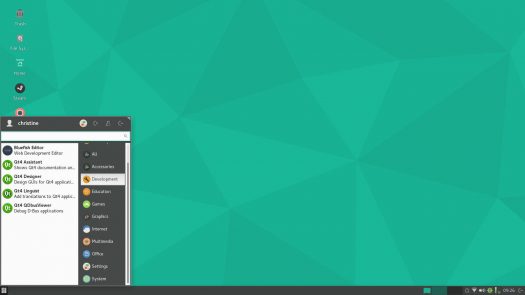
The Calamares installer worked quite well. The welcome screen prompted for the language, and had already selected U.S. English for me. The next screen set the time zone using the typical world map setup. After that was keyboard, followed by partitioning.
The way Calamares handles partitioning is pretty sweet. It offers four very sensible choices:
Install alongside: Installer will shrink a partition and make room for Manjaro 16.06.
Replace a partition: Replaces a partition with Manjaro.
Erase disk
Manual partition
Normally I would have done a manual partition, but “install alongside” seemed to fit the bill for me, so I went that route. I was shown a color bar map of the hard drive, showing the rather small Windows partition and the Mint partition taking up the lion’s share of the disk, along with instructions to click the partition I wanted to shrink. After choosing the partition, there was a slider to use to indicate how much should go to Mint and how much to Manjaro. I accepted the default, which split the partition down the middle.
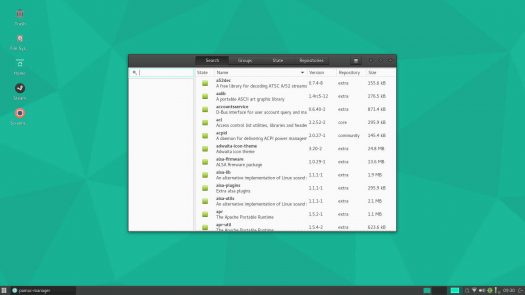
Unlike many installers, Calamares didn’t partition the disk right away, but went ahead and prompted for the rest of the information it’d need for the install — stuff like user password, did I want to use the same password for the administrator, and did I want to login automatically. After that was a location/keyboard/partitions overview with a warning that once I clicked “next” nothing going forward could be undone. After that there was nothing to do but read the advertisements scroll by about how Manjaro is the best Linux distro in the history of computing. Rather than do that, I went to the kitchen to make a pot of coffee.
Before the pot had finished brewing, I received the “installation complete!” notification and was offered the choice to either continue to play in the live version or reboot to the installation on the hard drive. I clicked “reboot.”
I have never seen an operating system boot as quickly as Manjaro. After the bootloader went through the ritual offering of operating systems, I was up an running before I’d normally expect to be seeing the first sign that the operating system was indeed booting.
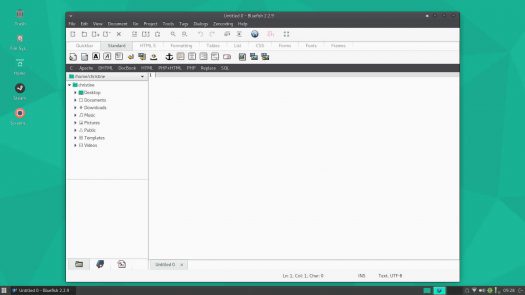
Like Antergos, which I reviewed back in May, Manjaro bills itself as a user friendly way to harness Arch Linux. Both use the Pacman package management system and are compatible with the Arch User Repositories, which is a good place to go looking for user packaged apps that haven’t yet made it into the official repositories. In addition, Manjaro maintains three sets of its own repositories — unstable, testing and stable.
Although the two distros are both based on Arch and developed to take advantage of Arch’s bleeding edge nature, the two distros are very different in ways that go beyond the cosmetic to touch upon basics like design philosophy.
When I was putting Antergos through its paces, it felt as if I was driving a fast Italian sports car that’ll get from zero to sixty in the blink of an eye but which requires much tinkering to keep on the road. That may not be true — it was just my impression. It never crashed and burned when I was driving it, but it always felt like it was a little on the breakable side — maybe because of stories I’d heard.
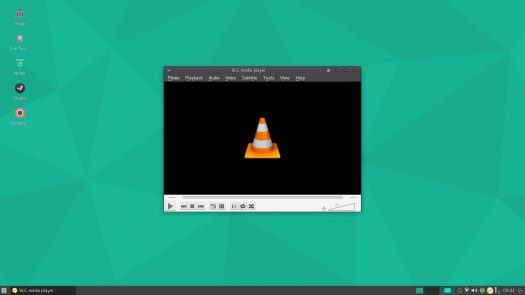
My first impression of Manjaro is just the opposite. The power and performance are obvious, but it feels as if it’ll run with the dependability of a well oiled sewing machine. I think that if I were a gamer, which I’m not, I would try this one on for size. Out of the box, it comes Steam ready, and gaming would offer an ultimate test on how it performs under pressure.
The trouble with impressions is that they come from a place that’s devoid of any experiences other than the educated guess, a lesson I learned back in the ’70s when I blew every dime I had on a cute little underpowered Opel Kadett. Because I knew the Germans’ reputation for building fine automobiles, I had the impression that this would be a car that would keep me going for a while. The day after I bought it, I ran across a friend — a mechanic friend, I might add — who’d once owned the very same make and model. “Get rid of it,” he said. “Now, while you can. They’re junk.” I didn’t listen; I’d already fallen in love with the car. A week later I was walking.
That’s why I never act on love-at-first-site impulses, which is the ultimate first impression. Tomorrow morning I’m going to destroy the Manjaro partition and return the disk space to Linux Mint, a distro that has served me faithfully for several years. I’ll do so without looking back or wondering about the distro love that might have been.
Christine Hall has been a journalist since 1971. In 2001, she began writing a weekly consumer computer column and started covering Linux and FOSS in 2002 after making the switch to GNU/Linux. Follow her on Twitter: @BrideOfLinux



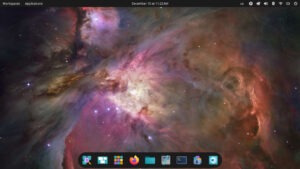

I love this distro so much we use it on all our machines in the office — heck, I’d marry it if I could 🙂 It simply just works.
This first Love experience of Christine Hall has resemblances of my early experiences with Manjaro Linux – not love, but great excitement and anticipation.
Fortunately I have not regretted my continuation with Manjaro, albeit with preferred KDE Desktop, which Manjaro does not support “officially” but which, along with KaOS supports for development stability along with Calamares installer.
After more than twenty years as an Information Technology professional focusing on Linux and Free/open Source Software (FOSS) for most of that time, including as USA reseller and tech consultant for SuSE Linux GmbH, I had felt an anxiety of not being satisfied with the majority of better known and quality “desktop” Linux distributions, which fell in either the most simplified, “newbie” category like Linuxmint or Zorin – especially for Windows converts, or the bleeding edge Debian, Sabayon or standard Arch distributions that were powerful, but did not have the everyday stability I had come to strongly desire.
Other than OpenSuse Leap, which is still a bit rough around the edges, Manjaro is proving, ever so slowly, to fit the bill – very powerful features and functionality, shrouded in intuitive, efficient and fast desktop GUI.
I am just hoping this endorsement does not jink my very satisfactory Manjaro experience thus far.
I also love this distro since march 2015, I’ve trashed Ubuntu in 3 Pcs for Manjaro.
Just look at all that updated software, no point release, no dozens ppa..
Manjaro and Pacbang/Architect are my go to distros.
A short live test can be instructive IF you use practices that test system robustness: add a few apps, remove a few, update a few, upgrade a few, tweak a few – try the moves that all too often reveal a fragile system.
I wanted a KODI friendly distribution to replace my aging WD TV Live boxes and tried Manjaro. I was blown away by its speed and stability and by how easy it was to get going. It’s now my go-to distro.
I’m a long term SuSE user — I still have my version 6 CDs, but since trying Manjaro I’ve shifted everything over and it was easy. My server (Dovecot email, Samba and tvheadend) was up in a day. Packages that were hard to find for SuSE were installed quickly. AUR and yaourt were a revelation.
Finally, system updates didn’t break anything!
BTW I tried Antegros but its install progran crashed out on me.
It never works for me. Never on DVD and never on a USB pendrive.
I simply cannot use it. I recall managing to boot it once a couple of years ago. Nice theme, looks deep.
No problem, because I’m able to install almost all others distros I try… but it is weird how Manjaro and I can’t go along.
Totally off-topic, but I think you may find this interesting nonetheless:
http://gs.statcounter.com/#desktop-os-ww-daily-20160808-20160809-map
A quick search shows August 11 is Independence Day in Chad…
I admit to being a pretty solid Debian user.
But I do like to install the occasional distro to look at them.
Installed Manjaro a long time ago when OpenBox was not a “community” release.
Used that same beta installer, was alpha then. Worked great, one of the best installers I have run into.
Was the nicest OB implementation I have seen.
Tried the Xfce version but didn’t like it. Just tried the live to see how they do things. It is like the Xubuntu setup using (at that time) Nautilus to run the desktop for some reason.
That doesn’t impress me. Xfwm4 works fine and running it you actually get all of Settings Manager under Xfce to actually work correctly.
I ran Manjaro OB occasionally for about 6 months. Very solid. Found the cli a better package manager than the gui but either would do the job well.
I just happen to like APT a lot. But when asked what I think of Manjaro I always encourage people to give it a whack.
They seem to have pretty high standards and try to live up to them.
There is a magic to this distro. I loaded it within the first week of it’s announcement back a-when, version 0.8.9 beta IIRC, and fell in love. I made it my “primary use” distro for a week or so, until I came to my senses and realized hey… this is beta…”
But what a strong presence out of the box! I keep my eyes on Manjaro and play with it often on all kinds of ‘useless’ hardware I have.
BTW Manjaro makes my old laptops quite useful, not just testing curiosities.If I had no computer and someone gifted me the Dell Pentium III laptop I frequently test Manjaro on, I’d be one extremely happy Linux computing camper.
Five stars for Manjaro, definitely one of the best, and most lovable distros ever conceived.
“There is a magic to this distro. ”
Behind it is a highly experienced technical team. The German influence of organization and discipline does appear to match the stereotype. Prior to switching to Manjaro a few years back I was a Sabayon (Gentoo based) user – I switched to try an Arch based distro, Manjaro. The experience of Manjaro was magnificent due to:
1. The ease of use, power and depth of the pacman and yaourt package installers (compared to Gentoo)
2.The dozens of destop environments supported
3. The package quality control, lack of crashes,no outages.
4. Manjaro utilities for kernel and hardware support – very easy and reliable.
5.The beauty of the mainline Manjaro Desktops (XFCE, KDE)
I have never even looked once at another distro since.
Manjaro on my partner’s Tohsiba Chromebook is a great fit. It mounts files from the Nextcloud server I set up.
Beware the repos! Had too many major breakages with Manjaro over the years. Sure, this is a result of running an arch derivative, but fixes that take maybe hours to be fixed upstream in the Arch “proper” repos iinvariably take much longer to be fixed by the relatively smaller Manjaro team. Not their fault, you can’t expect nothing to get under the radar ooccasionally, but the impression they give is that they are an extra layer of protection. My advice is give Antergos a spin. Much better out of box experience and uses the Arch repos except for styling etc…
For some reason, I don’t dig this Manjaro Linux thing.
Nice article.
I owned a Opel Kadett drove the crap out of it for 4 years, sold it for more than I paid for it new. Not my current car which is also new, I drove a Opel Cub 1.4 i (just a newer model) for 14 years before I sold it and have owned a total of 14 (various models) Opel’s over the last 30 years! Just saying! 🙂
Back on topic I’m an ARCH Linux user so anything that has ARCH in it’s make up is always good to go!
Regards.
I liked bot manjaro and antergos when I gave them a whirl on more than one occasion…but inevitably they both broke after an update or two. The reality is that they are Arch linux with window dressing. Unless you have the mojo to be consonantly trouble shooting when these rolling releases break (which they will no matter what you hear to the contrary) stay away.
Too bad because as Christine said they are fast and beautiful and I really dug the AUR repository. I loved the bleeding edge apps you can get…but no thanks. My time is better served with distros that are more stable and just as fast.
As a Linux beginner I was distro hopping while using Mint. I liked and I still like Mint. But after I tried Manjaro, I don’t distro hop any more. I had to install bunch of Python3 third party libraries and with some of them I had problems on Mint. On Manjaro it was a piece of cake. And I was sold…
There is no love at first sight – only infatuation at first sight. This may become love down the line – or it may just fizzle. Same here: do not let infatuation take hold of you. It was Bernard Shaw who quipped: “When two people are under the influence of the most violent, most insane, most delusive, and most transient of passions, they are required to swear that they will remain in that excited, abnormal, and exhausting condition continuously until death do them part.”
Overall out of all the Linux and BSO distros I have tried over the years Manjaro has been the best for me. I’ve stayed with the KDE version, love what they do with the Xfce version but ultimately KDE dose a lot better when it comes to monitors and more.
On the gaming side I can tell you form running steam a lot that thus far Manjaro seems to hold up very well.
I have used a ton of AUR packages over the years as well and most of them work though be-warned for lesser known things they can fail and be completely useless.
My only major gripe from the user friendly side of things is that when telling other people to try Manjaro I have to give them a walk though on how to setup Samba since it’s not ready out of the box which is confusing to a lot of people as the FM tie-ins are already there and they are use to windows file sharing just working.
All these distractive comments on topics like Opel Kadet car and love/infatuation have no relevance to using Manjaro Linux, either as a test project that failed/was successful, long term usage stories or valid and thoughtful comparisons with other distributions.
The one line comment about “not digging the Manjaro thing” also contribute to nonsensical, non-Linux/Open Source Software monologues that dilute great commentary.
@W. Anderson: I’ll grant the Opel Kadet story seems like a bit of a tangent, but did you really not get the point of @WRR’s metaphor? The phrase “love at first sight” is right there in the headline; WRR is pointing out, rightly, that first impressions are not something to base a long-term relationship on, whether that’s with a person or a desktop environment.
The “not digging the Manjaro thing” post looks to have been deleted; it may have been a spambot, though it sounds like it could just be a reference to a meme I’m not aware of.
@W. Anderson But the author wrote about Opel Kadetts, as well as love and infatuation (which I guess makes up “love at first sight”) in her article. Why should these things, then, be banned from the comments? Just wondering…
Not banned, but discourages from leading completely off-topic to nonsensical issues. ZDnet and TheRegister, out of the UK have been plagued on dozens of occasions by complete distraction of topic content to a degree that comment sections on a specific topic are disbanded.
It got out of hand very quickly.
I would never wish such disaster on Fossforce, which is fortunately one of the very few sources of reason and thoughtfulness in technology media.
As an experienced user of Manjaro I can say that I’m very proud with it. I switch from Arch to Manjaro becouse I really like the pacman/yaourt system. It’s very flexible.
My years with with Ubuntu and Debian where fantastic, but there’s no comparison between the flexibility of pacman. Only with the maintained repositories and AUR you have access everything you need.
But I was tired of Arch crashes during upgrades: always reading the forum before the update, and never was enough.
I spent lots of time maintaining the system.
And then Manjaro arrived. I tried it at the beginnings and the experience was almost the same that with Arch but with less problems and a great support, so… I waited…
A year later, – a year ago – I tried it again… And I’m really impressed. Updates are scheduled 10 days later than Arch Linux. So, the system comes to you with all possible bugs fixed.
In a year, no update have broken my system. The boot is fast. Like the 1st day…
Only problems with isolated AUR packages – plex -. But, easyly solved downgrading the package.
If you don’t abuse of AUR and you maintain your system clean,is strong… almost like a Debian… and… with updated software.
I had test lots of desktop environments & window managers and the system remains here. Stable, hardly stable. And the test is very easy: yaourt -S “what you need”… Uninstall yaourt -Rns “what you need”.
Recommended utilities: PkgCacheClean, Downgrade, Yaourt, run frecuently pacman-mirrors -G, pacman-optimize && sync and pacman -Qdt (for clean orphaned packages). More info at Manjaro Wiki.
I have an alias into my .zshrc // .baschrc:
alias update=’sudo pacman-mirrors -g && yaourt -Syyuua && yaourt -Qdt && sudo pkgcacheclean 2 && sudo pacman-optimize && sync’
Finally: I didn’t talk about Mint, Antergos, Gentoo with only a fresh installation and 1st feelings. At least a month of use is needed for that kind of valorations…
manjaro user with i3 desktop: 2 cores AMD, 2gb ram
@W. Anderson: At this point you’ve generated more off-topic discussion in this comments thread than anybody else has. Your complaints about (alleged) off-topic posts have caused more distraction from the subject at hand than the posts you’re complaining about.
@Nigrid: This is good information. I’m mostly happy with OpenSUSE, but it’s had occasional breakages, and I can see my way toward trying Manjaro if I ever go looking for another distro.
@W. Anderson …been to windows forum lately? Nice concise, professional language with no superfluous static in the way of straight forward questions and answers… wrong and/or useless answers 80% or more of the time.
At least there’s no “love” being bandied about over there in proprietaryforce land. 🙂
@Thad: You took the words right out of my mouth! 🙂 What’s wrong with a bit of lighthearted banter? Nothing, as far as I am concerned. I took the bait slightly when I saw the original Opel comment and just ran with it for a small moment in time, sorry if it offended.
Still love anything to do with ARCH Linux, and for the people who complain about updates breaking things, read the front page news (ARCH https://www.archlinux.org) and most of the time if anything is dicey, mention will be made. Also get to know the distro and be careful about willy nilly updating!
Peace!
I’ve been a distro-hopper for years with Slackware as my “home” distro. I got Manjaro on my desktop while waiting for Slackware 14.2 and found it very hard to take it off. I had it on my little Pentium-based Dell 11, too, and it was equally great on that. They both run Slackware now, but I’m feeling the itch to put Manjaro back on the laptop. The system is just so smooth and reliable — and coming from a slacker, that’s saying something.
The way I read the Opel thing, it seems Piers wants to state by way of an analogy that he’s not a distro hopper, nor changes his mind easily.
As he likes Arch, probably as much as that car brand, he apparently means Manjaro is OK with him.
Not totally off-topic IMHO.
If we don’t get rain, the pumpkins are going to be undersized,if you can even find one that hasn’t withered on the vine.
I like pie.
How odd. The reviewer blew away Manjaro without trying it out long term. If she had and didn’t like it, or even if she had only tried it for a short time because something critical went south, I’d have understood. But to assume that just because the first impressions are great, the distro must not be worth keeping, is the IT equivalent of assuming that because that girl you saw down the hall is a hot chick, she must be a brainless bimbo.
@Jeffrey Rollin-Jones You missed the point. I think it’s an excellent distro. I didn’t blow it up because anything’s wrong with it. I highly recommend it. I blew it up because even though I was tempted to keep it, I decided to stay with the distro I’ve been using for several years, which I’m very happy with.
German cars are famous because of built and safety.
But Opel is not a typical Duetch car.
You should have chosen BMW, Benz or even Audi.
Manjaro is a Mercedes-Benz, trust it.
Based on this article, I decided to give Manjaro a try. The installation was no problem, but while setting things up after the installation, the desktop froze up – no mouse, no keyboard, nothing. Had to hard power down. There’s nothing special or peculiar about my system (Dell XPS 8600 with NVidia card and SSD main drive), so this was unexpected. After the third (apparently random) time it did this, I called it quits and revert back to my previous Debian Sid installation which wasn’t giving me any problems at all. (Why did I bother to try Manjaro at all if my system was just fine? Well, I don’t mind moving to something better if it truly turns out to be better. In this case, it wasn’t.)
it sounds like you installed it to your hard drive… or were you running it as a live system? (off the DVD or USB?) Discovering compatibility issues before installing a distro is what the live DVD/USB system is all about.
Since over a year I am using Linux Manjaro (Xfce) on a 2012 laptop (1st gen Intel i5 CPU, 8 GB RAM). It was my first Linux laptop after 20 years of Windows. Everything was just going fine, no problems at all, when I heard of Linux Mint. I gave it a try (also Xfce), and it was like as if glue had been poured into the system. Everything was so unresponsive and slowish. Immediately I returned to Manjaro and I don’t know, why I ever should leave again. As a everyday desktop system, it has everything one can think of. And the repos are packed with the newest stuff around. It’s just awesome. And even if you don’t like Systemd, there is a almost equally well maintained OpenRC version.